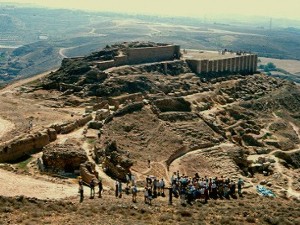|
To
understand Bilbilis is necessary going through its ravage and
dry places which make the ancient accession a difficult place
but with a singular beauty.
This
remodelling requires an important human and economical effort
what indicates the development in that moment and the will to
urbanize the city. But the magnitude of the public elements contrasts
with the technical pragmatism with which it is solved the urban
problems, beginning by the materials obtainment for the constructions,
all of these from the nearly environment, local stone though it
is important to indicate that materials imported from other areas
were found. In the interior part, the streets were ordered on a regulatory plan and they were distributed in terraces to accommodate the houses. The terraces system permits an urban order, it can be dug and filled according to the case. |
